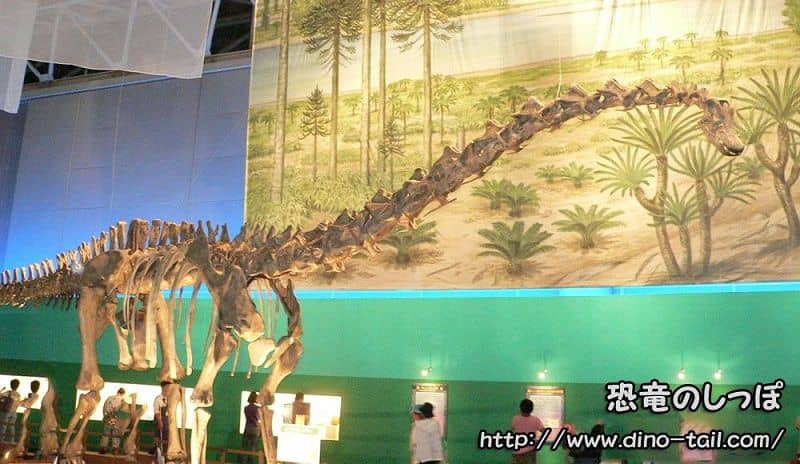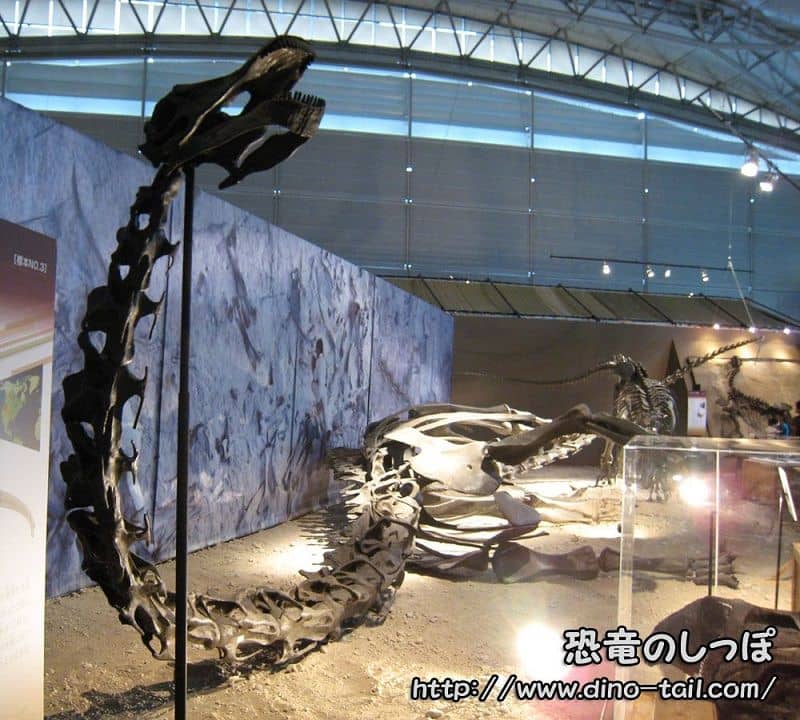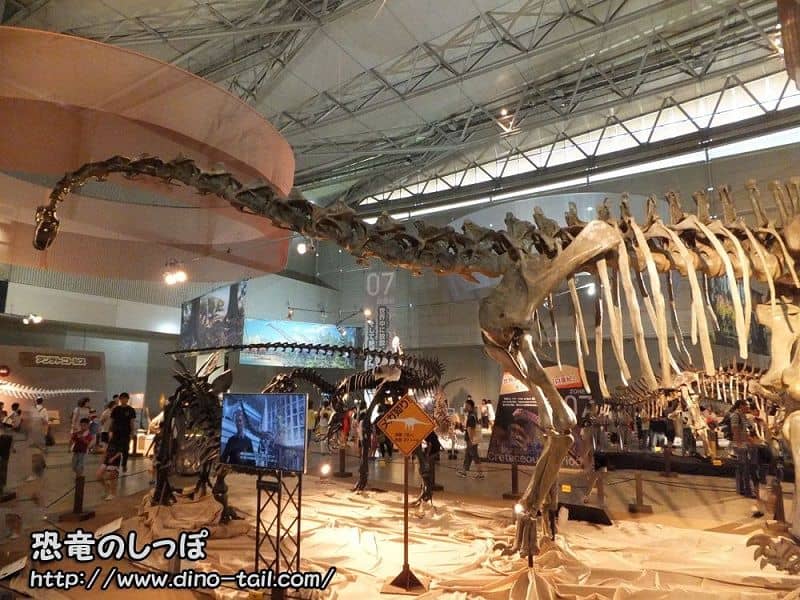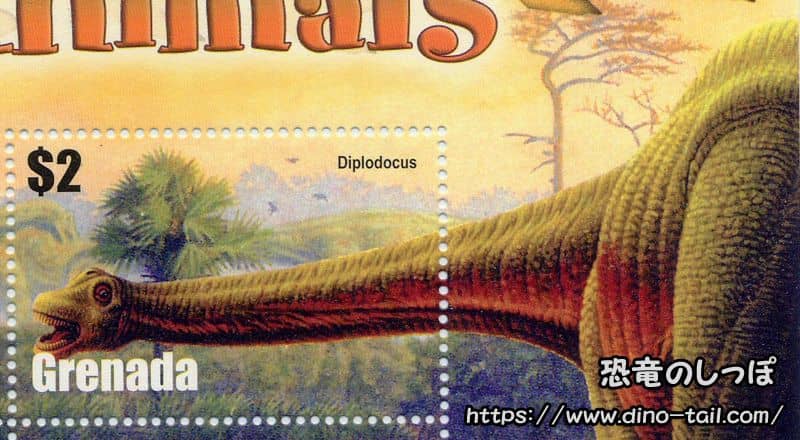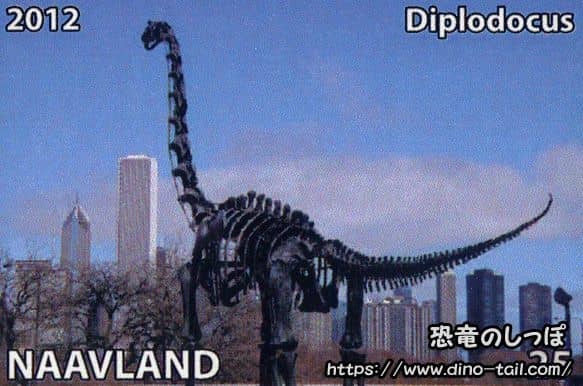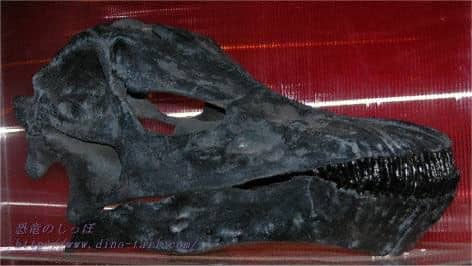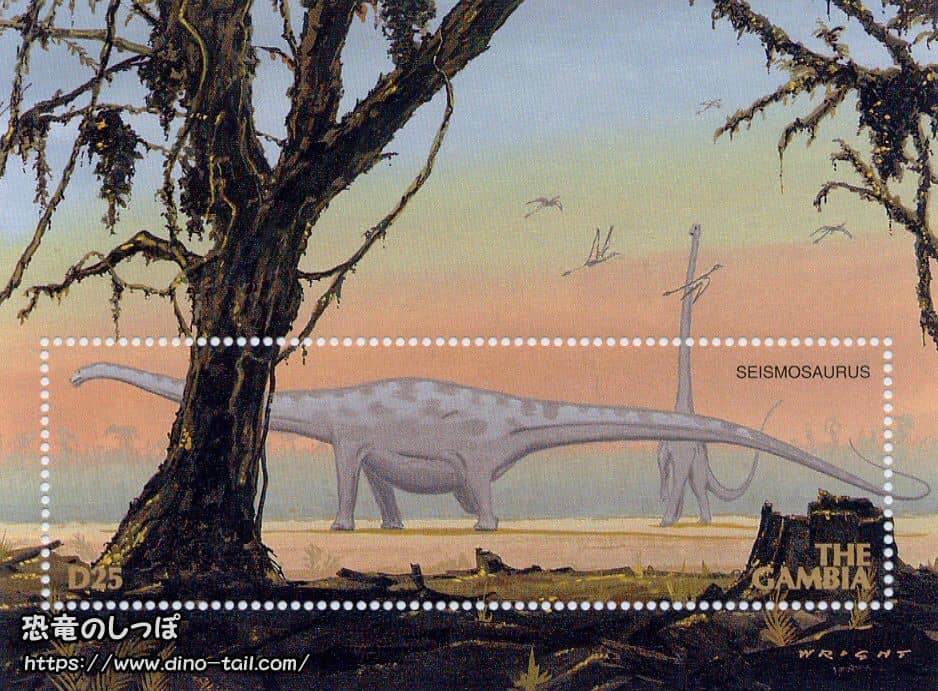About Diplodocus
| Scientific Name (Genus) | Diplodocus |
| Meaning of Name |
Double beam
diploos (double) [Greek] - dokos (beam) [Greek] |
| Classification | Saurischia, Sauropodomorpha (Sauropoda) |
| Total Length | Approx. 25 - 35m |
| Diet | Herbivorous |
| Period | Late Jurassic |
| Species |
Diplodocus carnegii
Diplodocus hallorum Diplodocus hayi Diplodocus longus |
| Year of Paper Publication | 1878 |
| Genus Name Publication | Marsh, Othniel Charles. (1878). Principal characters of American Jurassic dinosaurs. Part I. American Journal of Science, 3. |
Characteristics
Diplodocus is one of the most famous dinosaurs belonging to the suborder Sauropodomorpha. It is estimated to have been 20-35m long and weighed around 25-30 tons. Its relatively light weight for its length is due to its slender body and long, whip-like tail.
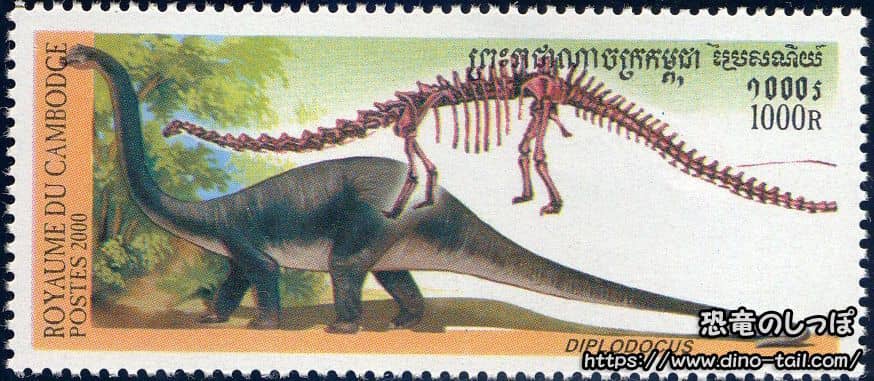
The theory that its tail, swung by powerful muscles, could function as a "supersonic whip" by exceeding the speed of sound and creating a sonic boom is very famous. It was thought to be used for self-defense against predators or for communication with its own kind.
However, a 2022 study using computer modeling concluded that the structure of the Diplodocus tail could not withstand the speed of sound (340 m/s) and could only reach a maximum speed of about 33 m/s. If this theory is correct, the tail may have been used as a physical weapon for defense. This remains an interesting topic of ongoing debate.
Additionally, the discovery of multiple trackways suggests they may have lived in herds. It had 14 cervical (neck) vertebrae, and its neck was usually held horizontally or pointing downwards.
Furthermore, skin impressions have revealed that a row of conical, keratinous spines, up to 18cm long, ran down the back of Diplodocus. These may have been used for defense or display, similar to a crocodile.
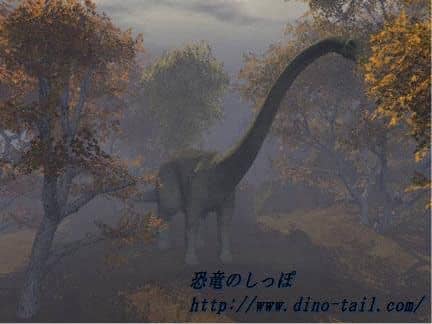
Tooth Shape and Gastroliths
In the mouth of Diplodocus, slender, pencil-like teeth were arranged only at the front. It seems it could not grind tough plants in its mouth.
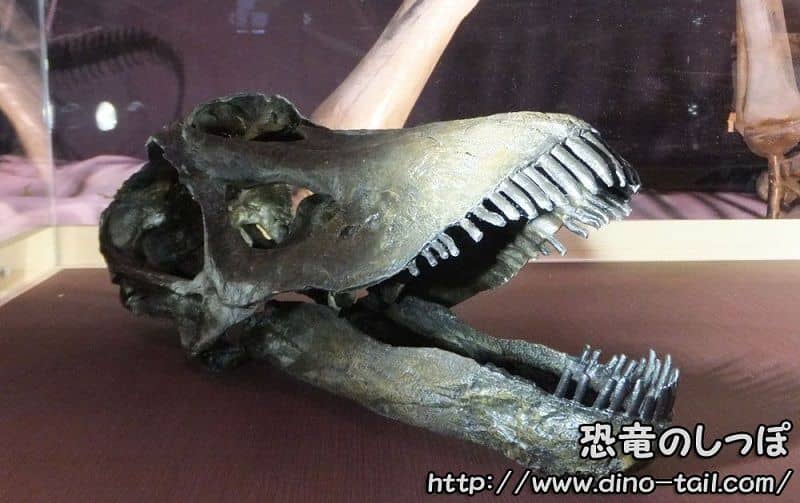
Like many other sauropodomorphs, numerous worn stones have been found in the abdominal region of Diplodocus. It digested large amounts of incoming plants by moving these swallowed stones (gastroliths) around in its stomach.
In 2013, a research team in the US examined the growth lines in the dentin beneath the tooth enamel and concluded that "the teeth of Diplodocus were replaced every 35 days."
Seismosaurus
A large sauropodomorph (specimen NMMNH P-3690) discovered in the USA in 1979 was described as a new genus and species, Seismosaurus hallorum, in 1991, but a 2004 study proposed that it belongs to the same genus as Diplodocus.
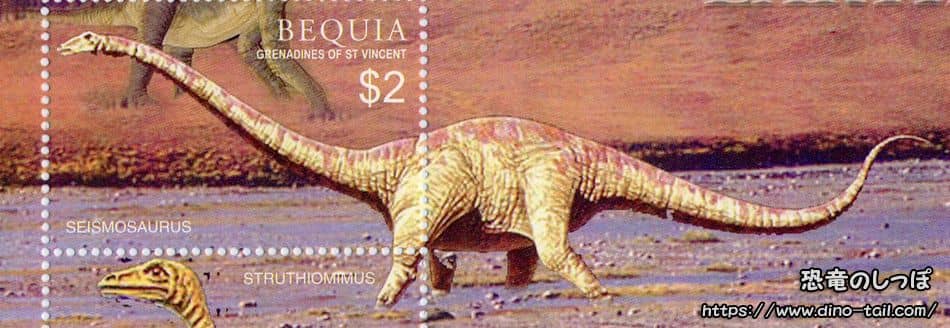
Although labeled SEISMOSAURUS, the prevailing theory is that it belongs to the same genus as Diplodocus.
Seismosaurus (now considered the same genus as Diplodocus) was also the mascot for the "World's Largest Dinosaur Expo 2002" held in Makuhari, Chiba, hosted by the Asahi Shimbun and NHK.
Discovery and Publication
The first Diplodocus fossils were found in 1877 in Cañon City, Colorado, USA. This area is part of the famous Morrison Formation (a geological formation from about 156.3 to 146.8 million years ago), which is thought to have been a wetland during the Middle to Late Jurassic.
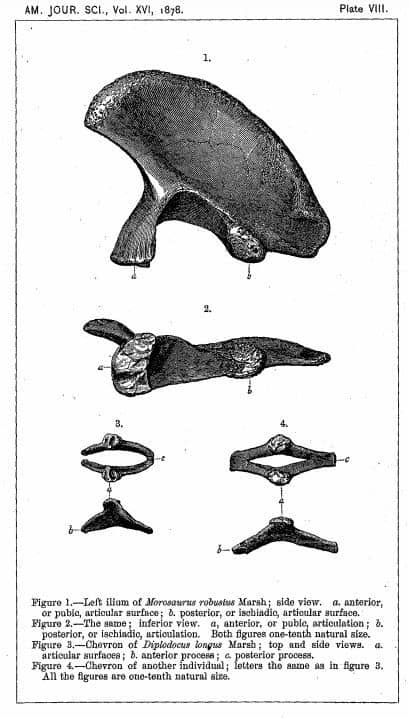
Marsh argues that Diplodocus is a new genus by comparing it with the previously described Morosaurus.
Source: Marsh, Othniel Charles. (1878). Principal characters of American Jurassic dinosaurs. Part I. American Journal of Science, 3.
Paleontologist Othniel Charles Marsh described the new genus and species Diplodocus longus.
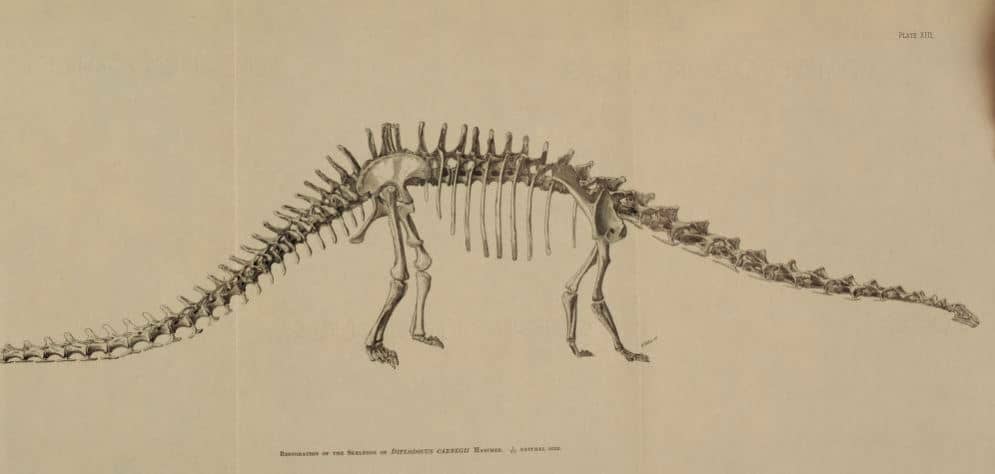
Hatcher, J. B. (1901). Diplodocus (Marsh): Its osteology, taxonomy, and probable habits, with a restoration of the skeleton. Memoirs of the Carnegie Museum, 1.
Diplodocus has a species more famous than the type species, D. longus.
This is Diplodocus carnegii, described in 1901 by paleontologist John Bell Hatcher from specimen CM 84, which was excavated with the support of the American industrialist Andrew Carnegie, known as the "Steel King."
The skeleton of this Diplodocus carnegii is known by the nickname "Dippy." At the request of King Edward VII of the United Kingdom, Carnegie had an exquisite replica of this skeleton made and donated it to the Natural History Museum in London in 1905. Following this, replicas of "Dippy" were donated to museums around the world, making Diplodocus one of the most famous dinosaurs in the world.
Diplodocus Stamp & Fossil Gallery
